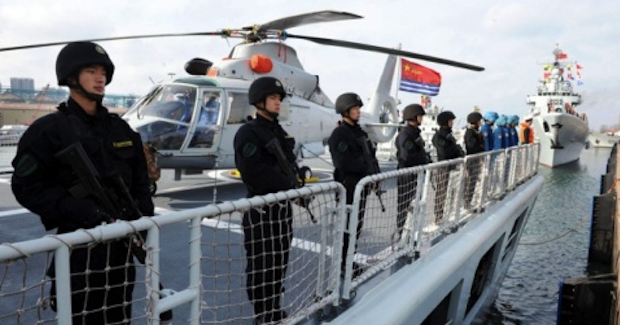The China Challenge

The most important impact of the Trump presidency on Australia and New Zealand will be the new administration’s relationship with China. The early signs do not look good.
President-elect Trump has already questioned the One China policy, properly described by China as the bedrock of the China-United States relationship. No state can have an effective relationship with China if it also recognises Taiwan as an independent nation.
Is such a fundamental breakdown of the China-United States relationship possible? And if it did happen, what would it mean?
What will the United States do?
The US clearly has the option to strengthen ties with Taiwan. It has done so in the past without unduly straining the relationship with China. The Bush administration of 2000-2008 sought to increase arms shipments to Taiwan, although in practise there was no great enthusiasm to actually deliver the new aircraft and ships. China did object, but did not let the issue disrupt the overall relationship. Arms deliveries were after all envisaged in the Third Communique of 1982.
The new Trump administration will undoubtedly expand the Taiwanese relationship. Many of the key advisors in the administration will see this as a key test of resolve. However, it is reasonable to expect that they will also understand the importance of the formal undertakings of the US to China contained in the agreements of the 1970’s and 1980’s. But they will stretch the boundaries of these agreements.
How will China react?
This will test the China-US relationship. China is in a different position to what it was in 2000. The Chinese economy is now four times larger and is likely by 2020 to equal that of the US—if not in sophistication, at least in size. China is the already world’s largest trading nation.
China has the second most powerful military force on the planet, and is progressively closing the military gap with the US, although that will be a multi-decade enterprise.
China expects to be treated as an equal of the US. It will not expect formal agreements to be broken. It will not stand by idly if their boundaries are excessively tested. This means that actions by the US will lead to counter actions.
What are China’s options? It depend on seriously it views the provocation.
A unilateral increase in US tariffs, as has been threatened by President-elect Trump many times, will see China seeking alternate suppliers. For instance it may buy Airbus aircraft instead of Boeing. Germany and Britain could therefore be among the largest beneficiaries of redirected trade. At a time of Brexit, this might be particularly welcomed by Britain.
Actions that more directly threaten Chinese sovereignty, such as anything relating to Taiwan, will be met with more forceful responses. China would see real benefit in a recalcitrant North Korea causing trouble. China could step up its presence in the East China Sea and the South China Sea, with more patrols and the full activation of the three new bases in the South China Sea. These are measures that can be turned on or off as the diplomatic situation demands.
There are other more enduring actions that China can take.
China’s military build-up
US actions that threaten China’s notion of territorial integrity are likely to cause China to accelerate its military build-up. This will permanently alter the balance of power in the Asia-Pacific, especially in China’s littoral margins.
The last 20 years has seen dramatic improvement in the quality of China’s military. The People’s Liberation Army (PLA) is no longer solely based around a massive land army designed to stave off invasion of the Chinese mainland. While this remains a fundamental role of the PLA, virtually all the improvement in capability has been around air and naval power.
While China may not have created a true expeditionary force, the PLA is now in a position to exert great presence in the seas around China, particularly out to the ‘first island chain’ of Japan and Taiwan, and encompassing the East China Sea and the South China Sea. The next zone of influence, the ‘second island chain’, extends out as far as 4,000 kilometres and reaches Guam and the Northern Marianas, both US sovereign territories.
It will be decades before China has any real prospect of successfully challenging US power in the second island chain, but in any event that is not where the contest will play out. The core interests of China lie within the first island chain.
At the current level of expenditure of 2 per cent of GDP, by 2030 the PLA will have military superiority within the first island chain. China is already building up to 100 combat new aircraft per year. The PLA Air Force will have 2,500 modern fourth generation aircraft, up from the current 700. As many as 300 aircraft will be fifth generation stealth aircraft. The new generation bomber will also be in service, with a force of at least 100 aircraft.
The same story can be told of the PLA Navy. At present there are 50 modern frigates and destroyers. There are 100 submarines, but at least 30 of these more than 20 years old. There is one training aircraft carrier. By 2030, at current build rates, there will be 150 frigates and destroyers. The submarine fleet will consist of 20 to 30 modern nuclear submarines and 60 or 70 advanced conventional submarines. The pride of the fleet will be the six aircraft carriers, which will be the equivalent of new British carriers.
Of course there will also be at least three South China Sea bases, each able to host formidable forces. Their construction in just two years was a breath-taking example of Chinese civil engineering capability
A bleaker future
The projected 2030 Chinese force is able to be constructed by keeping expenditure at 2 per cent of GDP. What if China feels that it has to up the ante, to make it clear who is dominant in its neighbouring region?
Lifting defence expenditure to US levels, that is 4 per cent of GDP, will dramatically alter the defence picture. It would result in the doubling of the predicted 2030 figures for the PLA Air Force and Navy. With 5,000 modern combat aircraft, the PLA Air Force will rival that of the US. Similarly, the PLA Navy, with 300 frigates and destroyers, a mostly nuclear submarine fleet and up to 12 aircraft carriers, will be a most formidable force.
Unlike the US, with its global deployments, China will be able to concentrate this entire force on its eastern seaboard and in the adjacent seas. Not many would question which country is dominant within the first island chain. The second island chain would also be under serious threat.
Is this what the Trump administration would want as its legacy? Will Australia and New Zealand be content with this outcome?
The Hon Dr Wayne Mapp is a New Zealand law commissioner. From 2008 to 2011 he was New Zealand’s minister of defence and minister of science and technology.
This article is published under a Creative Commons Licence and may be republished with attribution.





